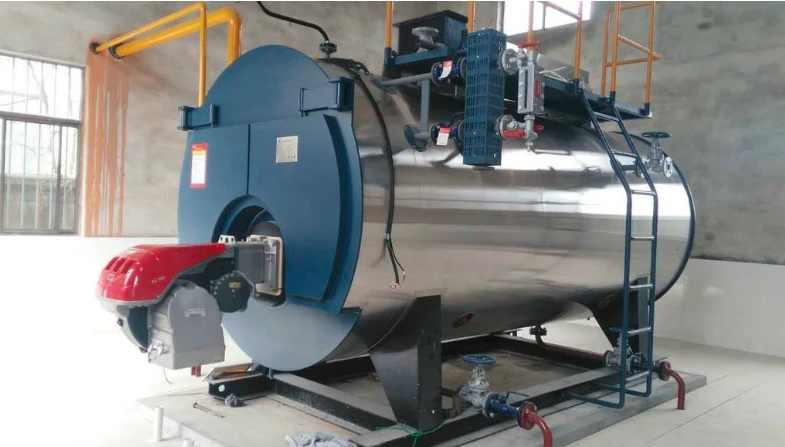
Дек . 29, 2024 11:44 Back to list
Gas Steam Boiler Upgrade for Enhanced Efficiency and Performance in Industrial Applications
Gas Steam Boiler Replacement A Comprehensive Guide
Gas steam boilers are essential components in many industrial and commercial establishments, known for their efficiency and ability to provide steam for various applications such as heating, power generation, and process work. However, like all mechanical systems, they have a limited lifespan and will eventually need replacement. The decision to replace a gas steam boiler is complex and requires careful consideration of several factors. This article will explore the reasons for replacement, the selection process, and the benefits of upgrading to a modern system.
Reasons for Replacement
1. Age and Efficiency Most gas steam boilers have a lifespan of about 15-30 years. As complex machinery ages, efficiency typically declines. Older boilers often consume more fuel, leading to increased operational costs. If your boiler is nearing the end of its life, it may be more cost-effective to replace it rather than invest in repairs.
2. Technological Advancements Modern gas steam boilers incorporate advanced technology that improves efficiency, reduces emissions, and enhances safety. Features such as advanced combustion controls, integrated monitoring systems, and better insulation can significantly lower operating costs.
3. Compliance with Regulations As environmental regulations become stricter, older steam boilers may not meet current emissions standards, leading to potential fines and increased scrutiny from regulatory bodies. A new boiler ensures compliance with all relevant regulations and may qualify for tax incentives for energy-efficient renovations.
4. Increased Demand If your operational needs have increased or you're expanding your facility, your current boiler may no longer be adequate. A new, appropriately sized gas steam boiler can help meet increased demand effectively.
5. Frequent Repairs If your boiler is frequently breaking down or requiring costly repairs, it may be a sign that it's time for a replacement. A new boiler can minimize downtime and enhance productivity.
The Replacement Process
1. Assessment of Needs Before embarking on a replacement journey, conduct a thorough assessment of your steam requirements. Consider the capacity needed, operational parameters, and any future growth projections.
2. Consultation with Experts Engage with HVAC professionals and boiler manufacturers. Their expertise can help you understand what options are available, including industrial versus commercial-grade units.
3. Choosing the Right Boiler Select a boiler that meets your needs while maximizing efficiency. Consider factors like fuel type (natural gas or propane), size, and additional features like modulating burners for improved efficiency in varying load situations.
gas steam boiler replacement

4. Budgeting for Replacement Budgeting is crucial. Factor in not only the purchase price but also installation costs, operational inefficiencies in your current system, and potential savings from improved efficiency.
5. Installation Planning Plan for installation during a period of low demand to minimize interruptions. Ensure that the installation complies with all local codes and standards, and engage certified technicians for the process.
6. Training and Maintenance Once the new boiler is installed, ensure your staff is trained on its operation. Implement a regular maintenance schedule to keep the new system running efficiently.
Benefits of Upgrading
1. Enhanced Efficiency New gas steam boilers are typically much more efficient than older models, often achieving over 90% efficiency, which significantly reduces fuel consumption and costs.
2. Reduced Emissions Modern boilers produce lower emissions, contributing to environmental sustainability and ensuring compliance with current regulations.
3. Improved Reliability A new system will be more reliable, reducing the risk of breakdowns and ensuring a consistent steam supply for your operations.
4. Long-Term Cost Savings Though the initial investment may be significant, the long-term savings on energy bills, maintenance, and repairs can far outweigh the costs.
5. Support and Warranty New boilers come with warranties and customer support, providing peace of mind and protection against unexpected failures.
Conclusion
Replacing a gas steam boiler is a significant undertaking but one that can yield remarkable benefits. By understanding the reasons for replacement, following a structured approach to selecting and installing a new boiler, and acknowledging the advantages of modern systems, businesses can make informed decisions that streamline operations, lower costs, and promote sustainability. As you contemplate upgrading, remember that investing in a modern gas steam boiler is not just about replacing old equipment; it is about enhancing your operational efficiency and supporting the future growth of your enterprise.
-
Efficient Biomass Fired Hot Water Boiler | AI Heating Solution
NewsAug.01,2025
-
High-Efficiency Gas Thermal Oil Boilers | HPT Models
NewsJul.31,2025
-
Oil Fired Hot Water Boilers Sale - High Efficiency & Affordable
NewsJul.31,2025
-
High-Efficiency Commercial Oil Fired Steam Boiler for Industry
NewsJul.30,2025
-
High-Efficiency Biomass Fired Thermal Oil Boiler Solutions
NewsJul.30,2025
-
High Efficiency Gas Fired Thermal Oil Boiler for Industrial Heating
NewsJul.29,2025
Related PRODUCTS






















